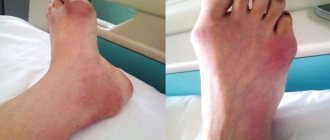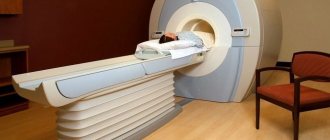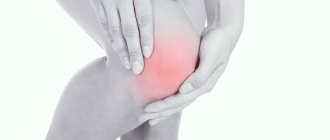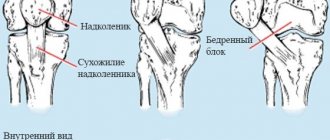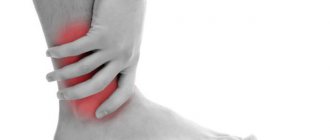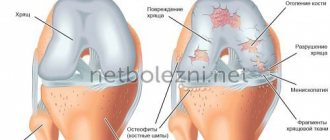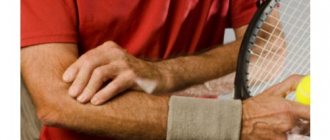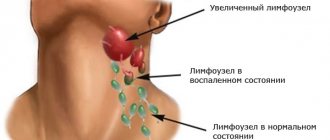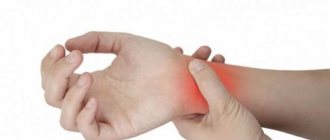The human foot consists of 26 bones and 33 joints. The height of the instep, the arch of the foot, and the shape and size of the toes vary greatly from person to person. For this reason, the foot is deservedly considered the most complex anatomical zone and has earned a separate orthopedic specialty.
“Foot hurts” - this is the complaint most patients come to me with. “Your foot is big, so show me exactly where it hurts” is one of my standard answers.
The foot provides transportation of your body in space. As long as your foot is fine, you won't pay much attention to it. However, when pain appears, you immediately want to get rid of it. In order to receive the correct treatment, you must know where the problem is located.
To accurately localize pain, the foot can be divided into several sections:
Why does foot pain occur when running?
The foot hits the ground more than 500 times per kilometer. That's over a million kicks on each leg if you run at least 40km every week for a year. And, I must say, the human body is very poorly adapted to such loads.
Nature has not endowed humans with powerful support: only the two lower limbs help us maintain a vertical position, and the feet represent a very narrow base. The feet contain the smallest muscles and bones, and when you step or run, only three bones come into contact with the surface - they take the shock load.
The causes of problems most often lie in the unpreparedness of the muscles and ligaments of the feet, and at the same time the legs, for the load while running. Microcracks and tears, microtraumas, accumulating fatigue, dislocations and bruises - all of these, together or individually, become causes of foot pain in runners.
The most common foot injuries among runners
“The most important reason for visits is overuse injuries and conditions, that is, those conditions that are associated with fatigue changes in soft tissues and bones against the background of heavy loads,” notes Candidate of Medical Sciences Musa Maysigov.
The most common foot injuries and causes of foot pain from running are:
- stress fractures (stress reactions, stress periostitis)
- tendoperiostopathies (insertional tendinitis of the Achilles tendon and plantar fasciitis)
- tendonitis and tenosynovitis of the tendons of the foot and ankle joints
- subungual hematomas
- ligament damage
- damage to tendons (Achilles) and ligamentous structures (plantar aponeurosis)
Let's take a closer look at the most common injuries.
Plantar fasciitis
- Where does it hurt
Burning pain in the arch of the foot in the morning, after getting out of bed. This is sometimes called “walking on glass” because of the similar sensations. During sleep, the foot bends in the plantar direction, the tightened tissue becomes irritated, and when stretched during the first step in the morning, this pain appears. The pain tends to decrease as you run as the inflamed tissue stretches. But then she comes back and the cycle continues.
Training plans for marathon and half marathon. and start preparing today.
- Why does it hurt
This is an inflammation of the plantar fascia, a ligamentous type of connective tissue that runs from the heel to the base of the toes. This injury often occurs due to overtraining, neglecting to stretch the calf muscles, or excessive work on climbs and intervals. This condition affects runners with both high and flat arched feet.
- How to treat
Rest and cold, anti-inflammatory drugs. This will reduce swelling. You can place a bottle of frozen water under your foot. Rolling a tennis ball under your foot will help relax the arch of your foot. Personal or over-the-counter anti-inflammatory medications and tape as recommended by your doctor may also help.
Stress fracture
- Where does it hurt
Pain in the top of the foot while running, localized to the metatarsal bones. There is no pain during rest, but there may also be pain when pressing.
Metatarsal bones are at risk for stress fractures from running, jumping and even dancing. Source: womensrunning.com
- Why does it hurt
Metatarsals are the long bones of the foot. Of the five metatarsals, the second and third are the most likely to suffer a stress fracture.
The damage is restored due to partial destruction (resorption) of the old bone and restoration with new bone tissue. When new tissue formation takes longer than resorption, the bone may suffer a stress fracture. People with long, thin bones are at greater risk of developing stress fractures. Osteoporosis can also cause stress fractures.
- How to treat
The best way to find out if there really is a fracture is to see a doctor for an MRI. Patients usually have to wear a special walking boot to help the bone heal properly. This is a multi-week process with limited weight lifting for the first four weeks and then boot loading for the next four weeks.
After proper rest, it is recommended to do foot and calf exercises to strengthen your feet and legs.
Morton's neuroma
- Where does it hurt
Burning pain between the metatarsals on the ball of the foot. This is nerve pain and can spread to your toes and cause tingling and numbness.
- Why does it hurt
This is an inflammation of the bundle of nerves between the metatarsal bones. It is caused by overtraining, weak feet, tight shoes and/or high heels. It may also be the result of persistent impact trauma to that area of the foot.
- How to treat
Check your sneakers. How many kilometers have you already run in them? Are they worn out? Do they fully suit the individual foot? Perhaps you need shoes with different support, wider, with less drop and height of the sole in the heel.
Bursitis
- Where does it hurt
A painful and inflamed callus on the foot, usually on the side and below the big toe. Pain in the big toe, little toe, or ball of the foot may also occur.
- Why does it hurt
The joints in the foot become misaligned, causing, for example, the tip of the big toe to pull toward the smaller toes. This causes the joint to protrude and form a bony lump. Bunions can be caused by shoes that are too tight and genetics, as well as weak arches.
- How to treat
Changing your sneakers and resting your foot may be enough to relieve the bunion and ease the pain. Gel pads from the drugstore can also provide a cushioning layer in your shoes. If you wear high heels, you need to take a break. If the pain becomes unbearable, go to the doctor.
Achilles tendinitis, ankle tendinitis
- Where does it hurt
Sharp, sharp, nagging pain, pain when pressing and pain during exercise in the ankles on different sides. We described Achilles tendinitis in detail in one of the articles. The other two types of tendinitis, peroneal and tibial tendinitis, cause pain on the outside and inside of the ankle, respectively.
- Why does it hurt
The most common causes are overtraining, poorly chosen running shoes, insufficient foot muscle strength, insufficient development of stabilizer muscles, neglect of stretching, insufficient recovery, and incorrect running technique.
- How to treat
Rest, applying cold, taking anti-inflammatory drugs, choosing shoes, rehabilitation and strengthening exercises.
What to do if pain occurs
Of course, you can’t run with pain, but many people do. If the pain does not go away, but there are no pronounced restrictions, then the universal algorithm of actions is as follows:
- take a break
- apply cold for swelling
- use non-steroidal anti-inflammatory drugs
- reduce the impact on the feet - eliminate shock loads, uncomfortable shoes, etc.
- If there is no improvement within a week, go to the doctor.
– Do not treat yourself or try to determine the cause of the pain. First of all, it's easy to make mistakes. For example, a ruptured Achilles tendon can easily be confused with an ankle ligament injury. And if the second is in 95% of cases a simple injury, often healing on its own and almost always without major consequences, then a rupture of the Achilles tendon is a serious diagnosis, and the matter most often ends in surgery.
Secondly, often the doctor’s skills are not enough to accurately determine the problem, and additional research methods have to be used, and not always MRI. Preferably CT, or ultrasound, or radiography.
Thirdly, this is an excellent opportunity to identify possible dysfunctions in the function of joints, muscles and ligaments that you might not have even guessed about. Flat feet, consequences of childhood injuries, various hypertension, and so on.
Fourthly, by doing everything yourself, you will almost certainly lose your most valuable resource - time,” warns Dr. Maysigov.
If your feet hurt, you will most likely consult an orthopedic traumatologist - this will be a reasonable and correct choice. But in some cases you will have to communicate with other specialists.
– With a podologist for nail pathologies, a phlebologist if it is necessary to assess peripheral blood flow, with a physiotherapist when prescribing complex rehabilitation treatment. Often an endocrinologist, dermatologist, or neurologist has to get involved,” the doctor adds.
Treatment of foot injuries in runners falls within the general framework of treatment of such injuries in ordinary patients. For fractures, a plaster cast is applied; if necessary, surgery is used. When tendons or ligaments become inflamed, anti-inflammatory drugs and physical therapy are used.
If pain appears, it is necessary to stop exercising, and after recovery, be sure to undergo rehabilitation
Recommendations for preventing foot problems
Can some injuries be avoided? Yes, and without much effort.
On an ongoing basis during training, it is necessary to maintain the elasticity of soft tissues - stretching, Pilates and yoga will help here. Periodic massage won't hurt either. Both of these tips will be especially useful for those who have taken a break from exercise, after which the muscles and ligaments seem to “freeze” and “shorten.”
– It is necessary to take a balanced approach to the load regime, not to overload yourself and not to take too long breaks. It is also important to pay attention to external factors, such as weather, features of the running surface and lighting.
For patients with flat feet, it is advisable to use orthopedic insoles, which should be individual, made taking into account the characteristics of the feet, type of load and shoe preferences.
Exercises to prevent pain
The feet play a huge role when running, and at the same time they are almost the weakest point of our legs. Therefore, it is absolutely impossible to neglect strength exercises that strengthen the muscles and ligaments of the feet and legs; special targeted exercises aimed at strengthening the finest tissues of the feet; stretching.
Strength exercises for feet
- One leg calf raise with dumbbells. Performed from a step platform (or any elevation) with weights in each hand, or in one hand, or without weights. These exercises are given in the book “Anatomy of Running” by Joe Puleo and Patrick Milroy.
- Standing calf raises in a machine.
- Pumping the calf muscles in the simulator while sitting.
- Toe abduction and leg extension with fitness band
- Exercises on a BOSU type balancing platform. You can perform any exercise on the hemisphere - for example, squats. The main thing is that the lower leg muscles work.
Special targeted exercises to strengthen the feet
- Move into Downward-Facing Dog pose from a kneeling position.
Kneel on the floor with your toes flexed and sit on your heels. Rock from side to side with your toes curled to stretch your foot, calves, and tendons. Get on all fours, keep your fingers bent underneath you, and move into the “Downward Facing Dog” pose. Try to reach the ground with your heels.
Hold for 2 seconds, then go back to all fours and repeat the cycle. Do it 5 times.
- Press through three trigger points of the foot - the same ones on which the foot rests: the heel, the middle of the foot, under the toes. You have to literally “step” on something hard with them. Any small object is suitable for this - for example, a hard ball.
- Picking up small objects with your toes, “pinching” a carpet or towel.
- Walk on toes; on the outside of the foot; on the inside of the foot; on the heel.
- To maintain balance - stand on each leg in turn, lifting the other off the floor.
Stretching to prevent foot pain
- Standing calf stretch. Place your hands on the wall. One or both legs are pulled back, heels pressed against the wall. Press with your hands into the wall and with your heels into the floor - hold for 15-30 seconds.
- Stretching the calf muscles while standing on an elevated platform.
